Eleven high school students from Sandsli in Bergen are watching. It is the first Wednesday in May, and they have come to Finse to see how glacier scientists work. Soon they will be the ones to swing the sledgehammer.
Five climate researchers are at the glacier with the students – from the Bjerknes Centre, the University of Bergen, Uni Research and the University of Leeds. The sledgehammer is one of the tools they use to explore how Hardangerjøkulen is affected by climate change.
Measuring ice with sound
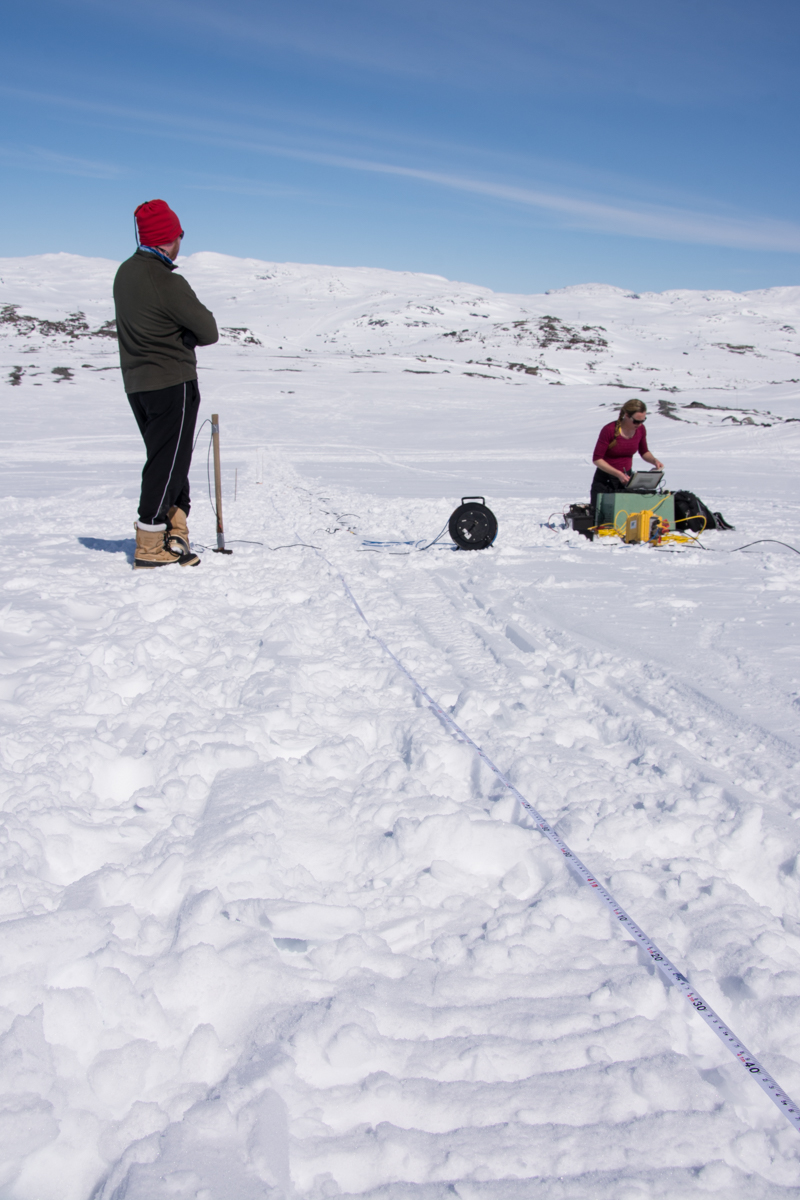
Adam Booth og Siobhan Prise have traveled from Leeds to Finse to measure the amount of snow and the thickness of the ice at the glacier. Adam is swinging the sledgehammer, it is their tenth day in the field, and he is approaching 900 hammer strikes.
The students listen carefully as Adam explains their method. By hitting the ice, Adam and Siobhan can use seismic instruments to calculate how thick the glacier is. Do the students know how seismic measurements work?
"It is pressure waves", says one of the students.
"You answered even more correctly than I anticipated", says Adam. "And these pressure waves are sound waves."
The sound of the sledgehammer hitting the metal plate propagates through the snow, through the ice, hits the sediments and the ground below the glacier, is reflected back up and reaches the surface.
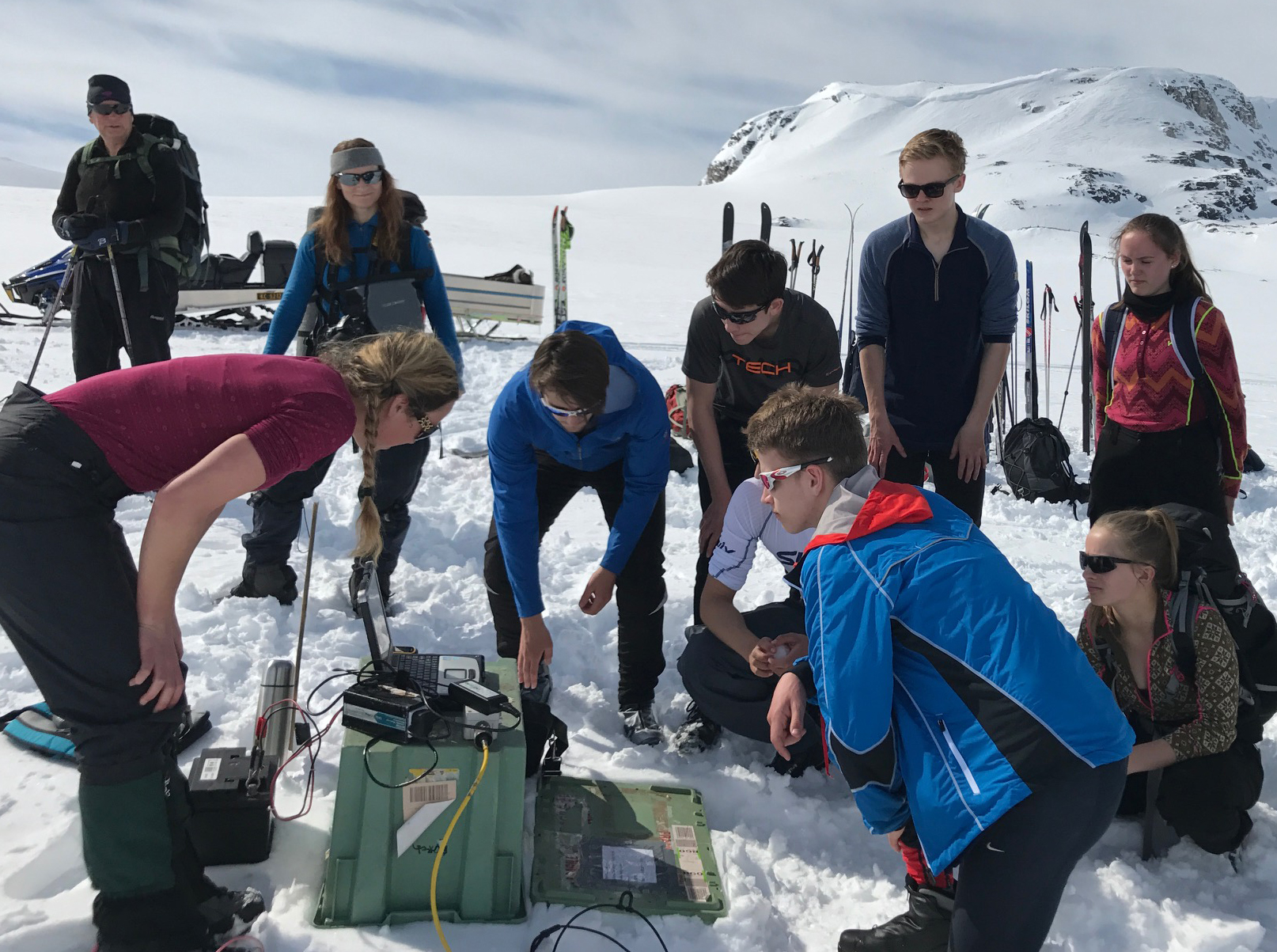
To register when the sound waves come back to the surface, Adam and Siobhan have placed a chain of seismic sensors in a long line over the glaicer. How long it takes for the sound to reach each sensor, depends on how far the sound has to move through the ice.
Siobhan shows the students how they can see the movements on a computer screen. The result tells them how thick the ice is.
Hardangerjøkulen is shrinking
Geologist Atle Nesje holds up a sheet with a curve that shows how far Hardangerjøkulen has withdrawn the last years. The students sit on the snow in front of him. They can see for themselves that the glacier now stops far above the old moraine.
Atle points at some rocks farther down. That is where the glacier front was in 2001. He has been here every year since 1982 and has kept track of the development of the glacier from year to year.
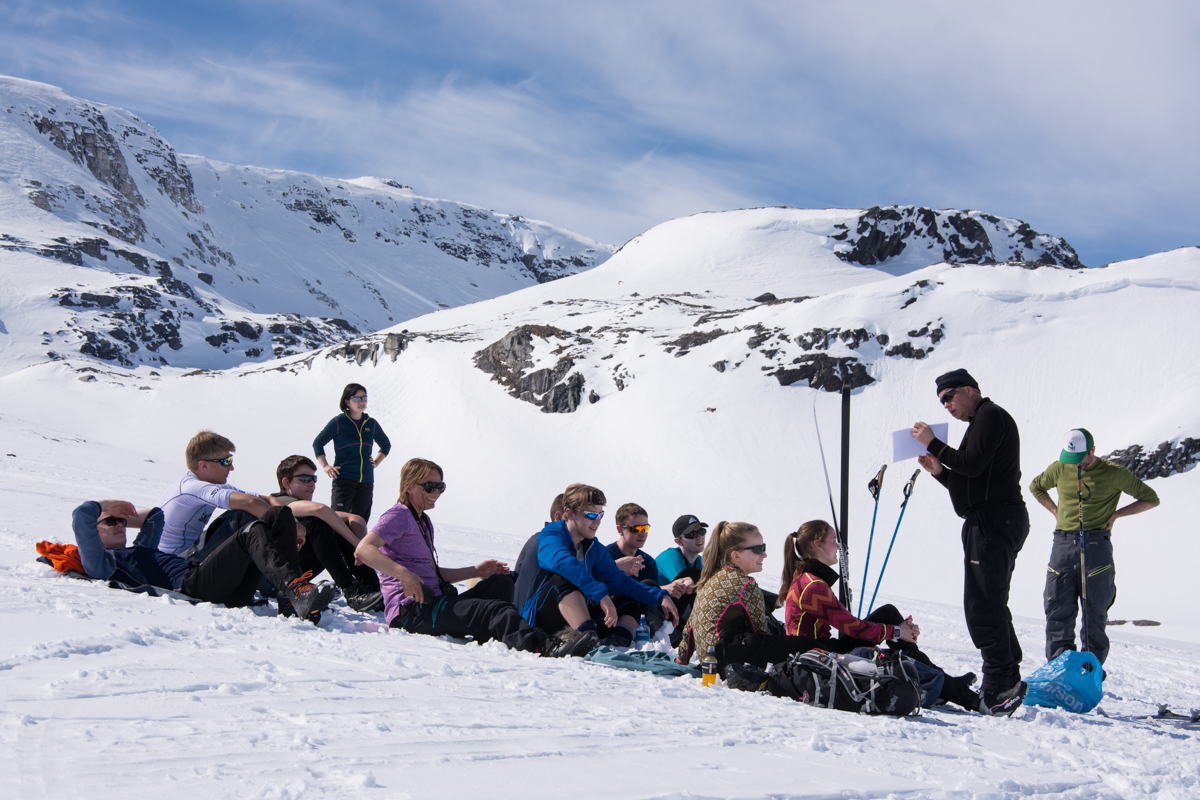
"The students recently had a test about this", says teacher Åse Heilund Midttun. "Now they get to see that what they have learned is relevant and useful."
Weighing snow to find water
"You need to fill the tube completely", Atle instructs the students.
Atle and Stefan Sobolowski are sitting at the edge of a 2.6 meter deep hole in the snow. On the ice surface at the bottom of the hole, three students struggle to press a plastic sylinder into the wall of snow. Finally, they make it. They pull it back out and make sure it is filled with snow before pouring the snow into a plastic bag for weighing.
"0.45 kilos"
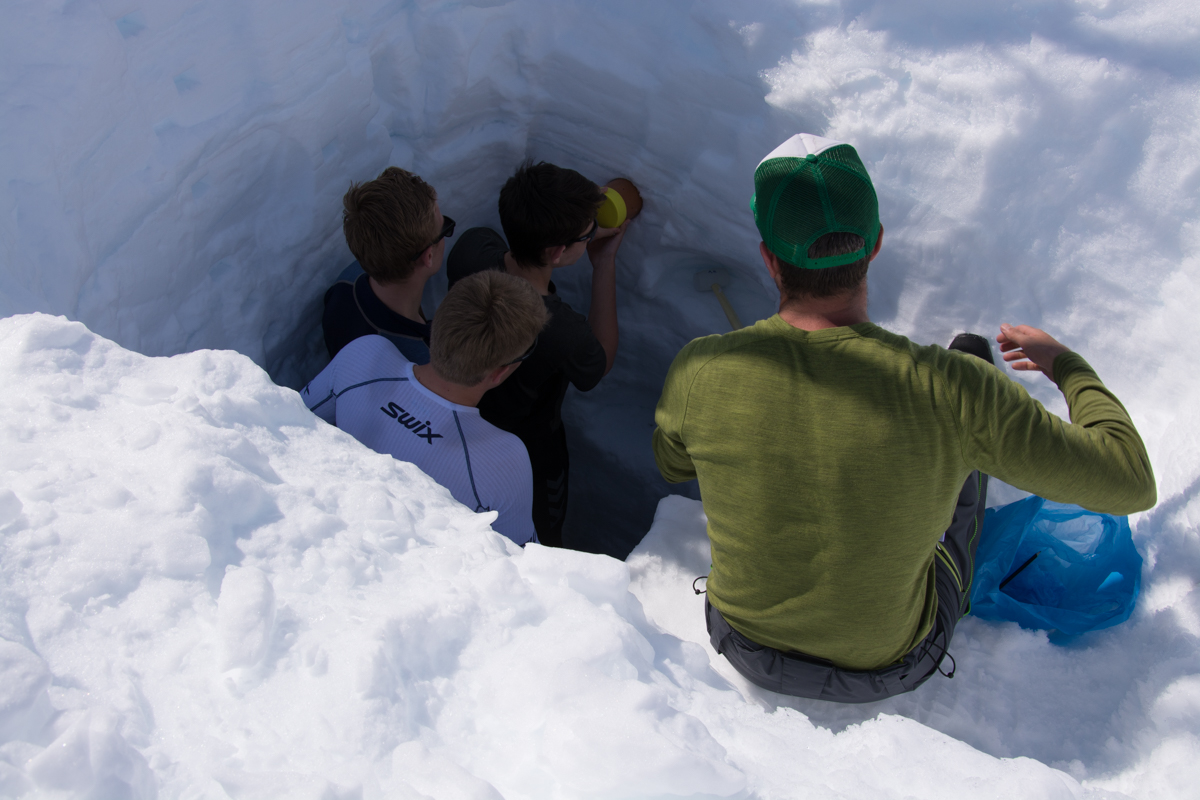
One liter of this snow weighs 0.45 kilograms – a little less than half as much as a liter of water. The results will be used together with the snow depth found by the researchers from Leeds. The glacier scientists' toolbox contains more than sledgehammers. The last week they have driven a snowmobile 120 kilometer, criss-crossing over the ice, trailing a snow radar. The radar measures snow depth. Now that they also know how compact the snow is, they can calculate how much water this would amount to.
Skiing from the train station to the glacier front, the students have seen how unevenly distributed the snow is, with snow-free patches alternating with heavy snowdrifts. It is obviously impossible to get an overview of the snow depth by measuring in only one place. Days like this are rare at Finse. Normally, the wind will whirl the snow around.
Inside the tourist cabin Finsehytta, the students get to see the radar data that shows the depth of the snow on Hardangerjøkulen. Adam from Leeds tells them that they have found parts of the glacier with only half a meter of snow, whereas other parts may have at least six meters, perhaps eight or nine.
Nature is complex
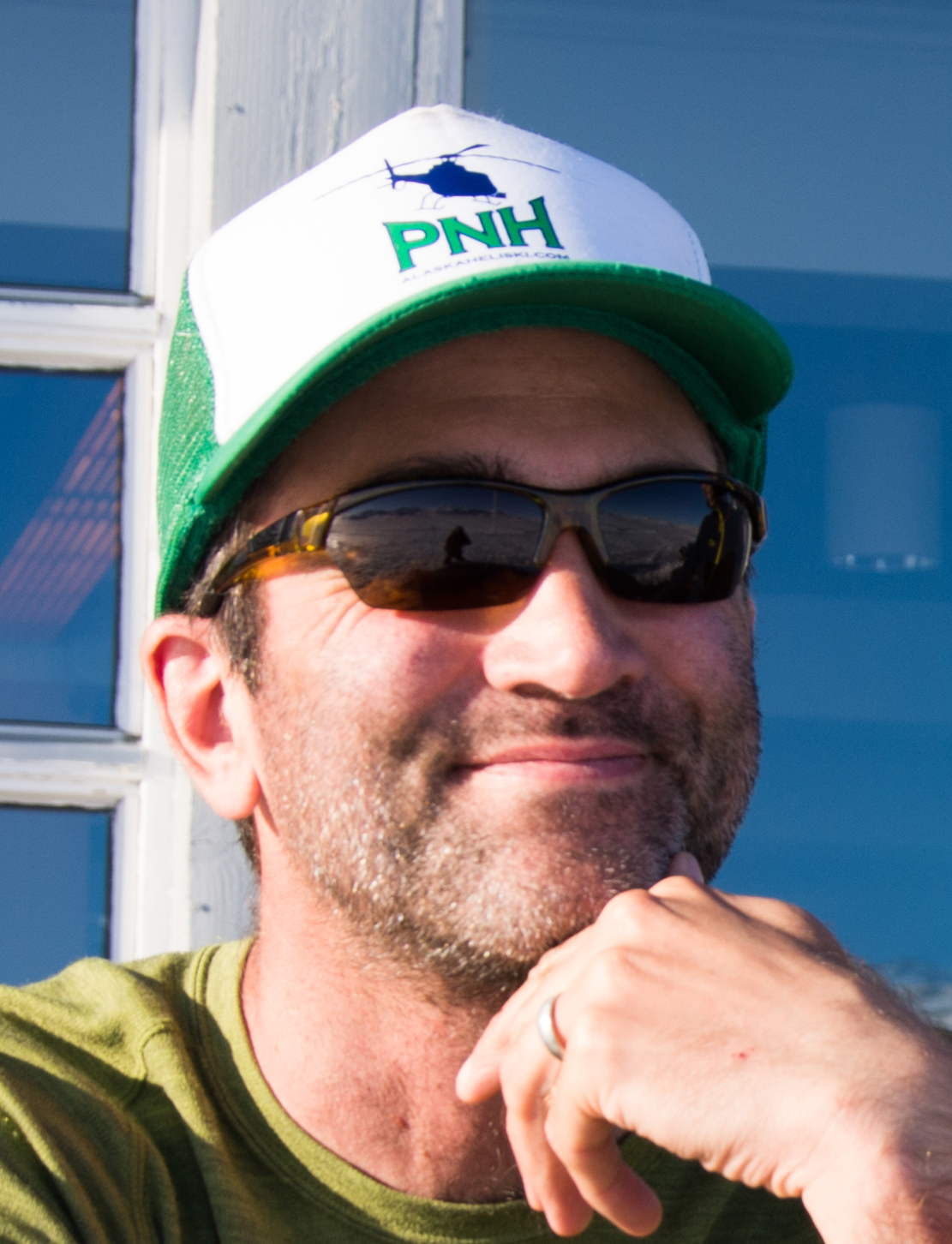
"Things are often oversimplified", says Stefan Sobolowski. "It is important that the students get to see for themselves how complex nature is and that all things are connected."
He tells the students that he used many years to find out what to work with. What made him make up his mind?
"Surfing."
Stefan was studying to become a science teacher, but was offered a job in a research project. While considering the offer, he went surfing.
"I had to think about what I thought was most interesting", he says. "Out there on the board, I realized it was the waves, both in the ocean and in the air. Weather."
Changing the course of water
Still, both Hardangerjøkulen and the surrounding region is covered by snow, but soon the melting season starts. The Bjerknes scientists think that the computer models used to describe glaciers today are too simple. Their theory is that this may cause the models to underestimate how fast the glaciers retreat. To improve this, they would like to develop a more detailed and more realistic glacier model.
They have chosen Hardangerjøkulen and Finse as a test catchment, as measurements are already available. In addition, they will collect more data, not just of snow, but also of meltwater run-off to the rivers draining the catchment in summer.
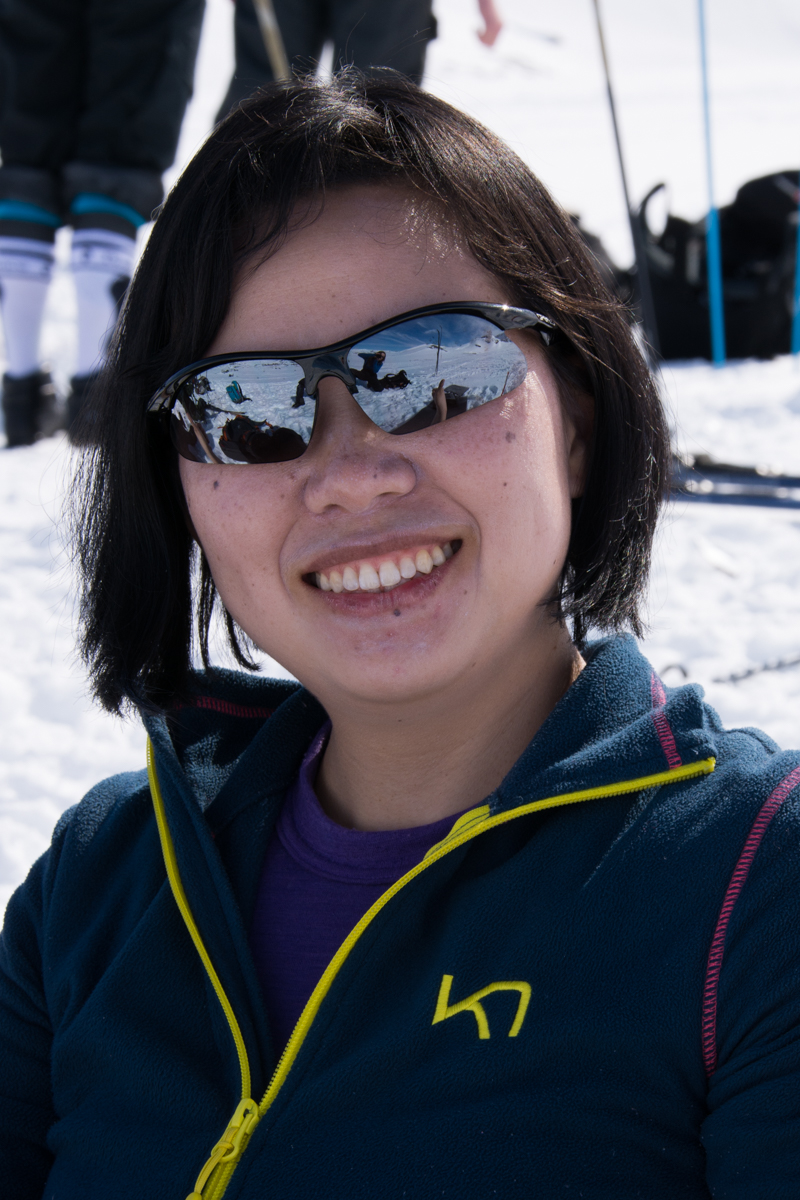
"When a glacier withdraws, the shape of the catchment changes", says hydrologist Lu Li. "This can influence the production of hydropower."
It is not only a question of how much water ends up in the rivers, but of how the water is distributed from one season to the next. And in extreme cases, glacier rivers can change their path and flow out from different parts of the glacier compared to today. Then your hydropower plant has to be wisely located.
The students nod. Through the window, they can see the glacier they hammered earlier in the day. They have seen how much it has shrunk since 2001, and they have seen what the researchers do to find out how it will continue to get smaller and smaller in the coming decades. You need a radar, that is clear, and new computer models. But for the hardest work, little can compete with a good, oldfashioned sledgehammer.

